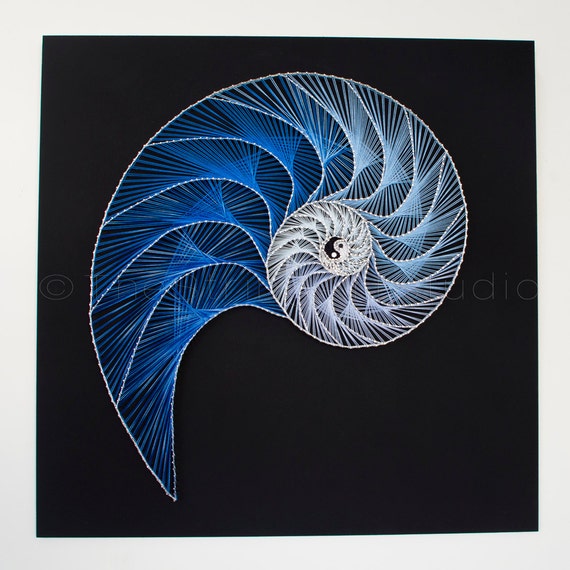
I've been working a string art piece to fill a large empty wall in our house and thought I'd walk you through the entire process. By the end, you should not only be able to recreate my design exactly if you like but also come up with your own awesome creation.
The first step is to choose a design. String art uses the mathematical concept of creating curves with straight lines. (You can read more about it on websites here and here. )The best designs are going to be either entirely geometric or a combo of straight and curved lines. I decided to make a design using the Hylian crest and master sword from the Legend of Zelda. We have a very large empty space above our couch so I decide to use a base that was 4 foot by 4 foot. I'm sure that there's a variety of ways to get your design transferred to your base I'll walk you through my method and all the pros and cons for it.
I first created the design I wanted by layering some elements in Photoshop but I had problems when I tried to increase the size in that program. By the time it was large enough to fill the space I wanted the design had become much too pixelated and blurry to be useful. So I decided to use a projector to trace the design. The first step involved taping sheets of paper together to get a large enough piece for the design. I also ran into issues with this method. If I printed the design larger, it was easier to get it sized correctly and in focus but I could only fit a portion of it under the projector at once. It was very difficult to get the parts to line up by raising and lowering the projector. When I attempted to print it small enough the entire design fit on the projector at one time I could either get it in focus or large sized but not both at once.
I finally managed to get one-half transferred well and then took advantage of the large picture window at my Mom's house to trace the other half.
Once you have the template and design all figured out its time to get your base ready. I am using a 47 by 47-inch sheet of pine plywood. I sanded it down a bit and painted it with flat black spray paint.
You simply put a nail at each point marked on the template. They need to be deep enough to hold firmly but not so deep you don't have space to wrap the string around later. Ideally, everything should be in straight even lines and the all the nails at the same height.
I gave up on this because I realized that with the number of nails I needed to hammer in if I worried about perfection I'd never be done. Because of the type of board, I'm using some of the nails have gone in super easily while other require more hammering. At this point, I've used a box and a half of nails, worked for around 3 hours total and have a little more than a quarter of the design hammered in.











No comments:
Post a Comment